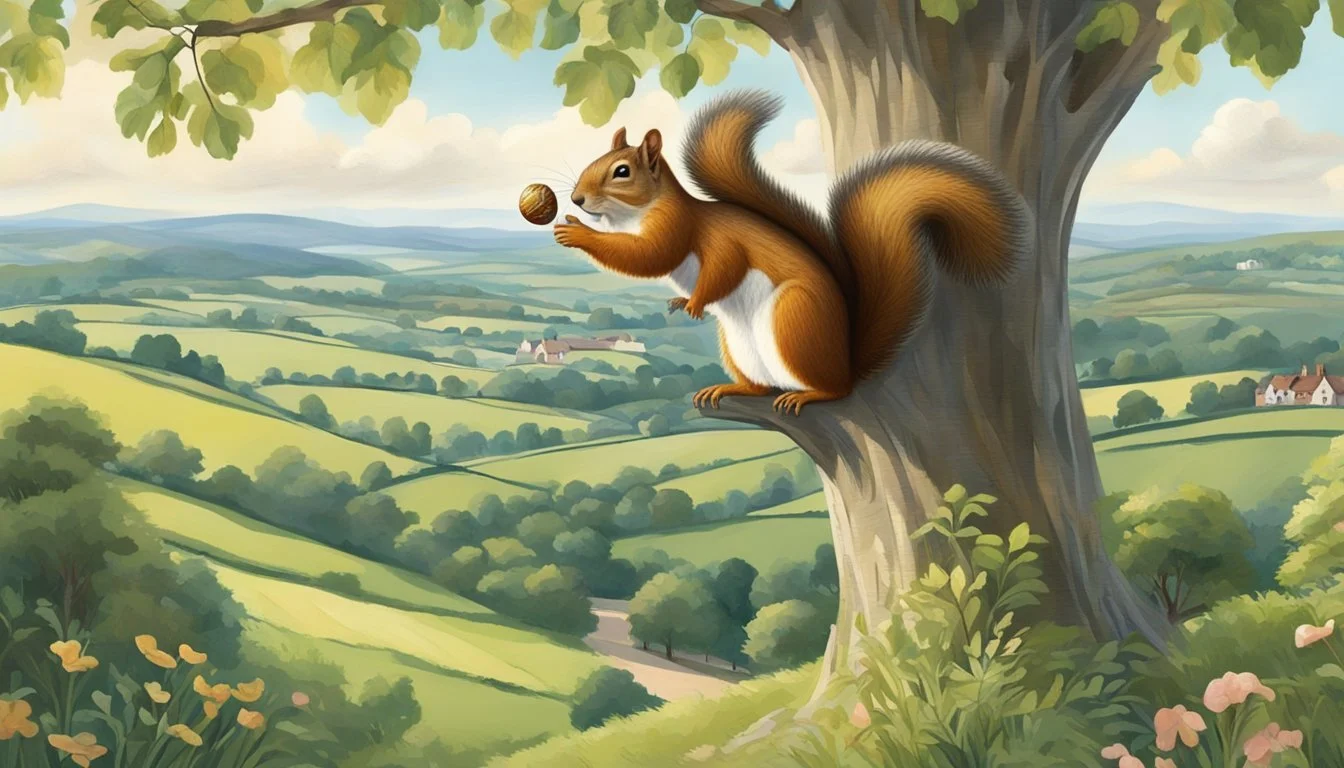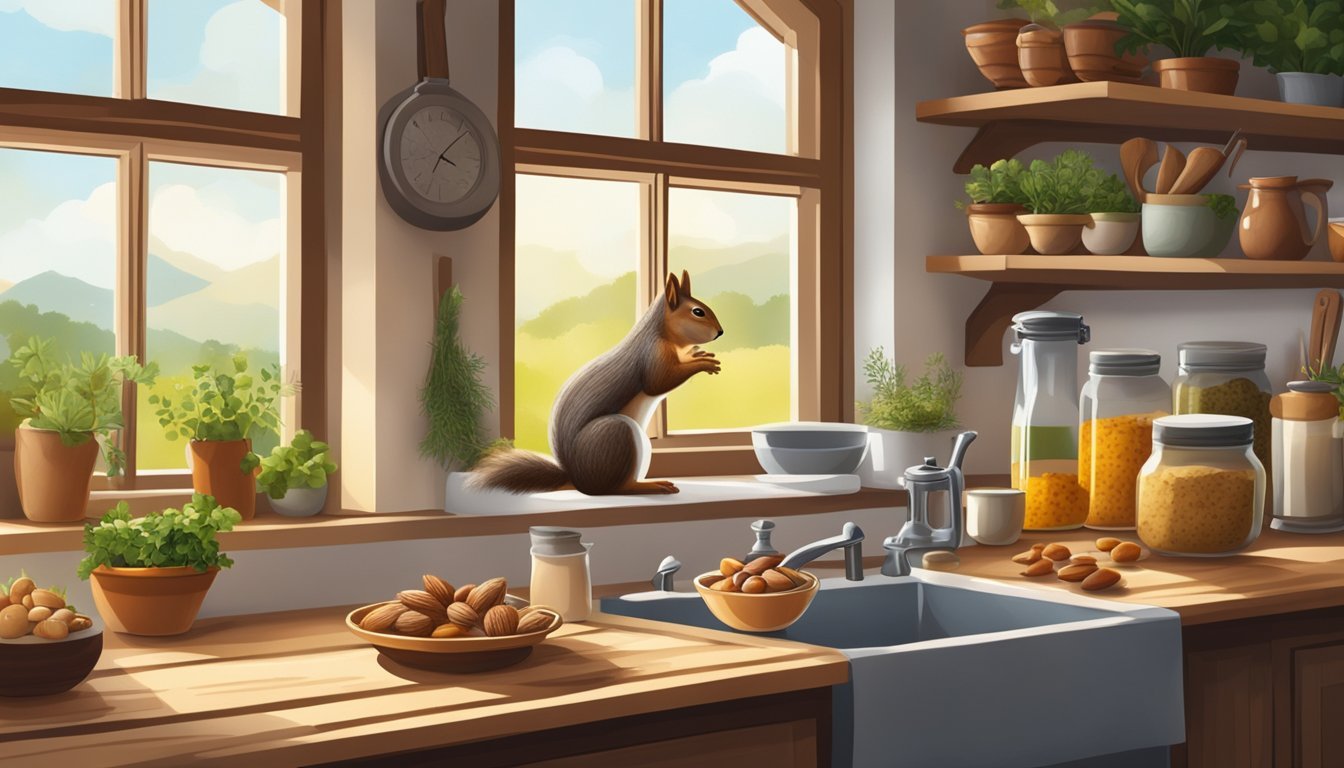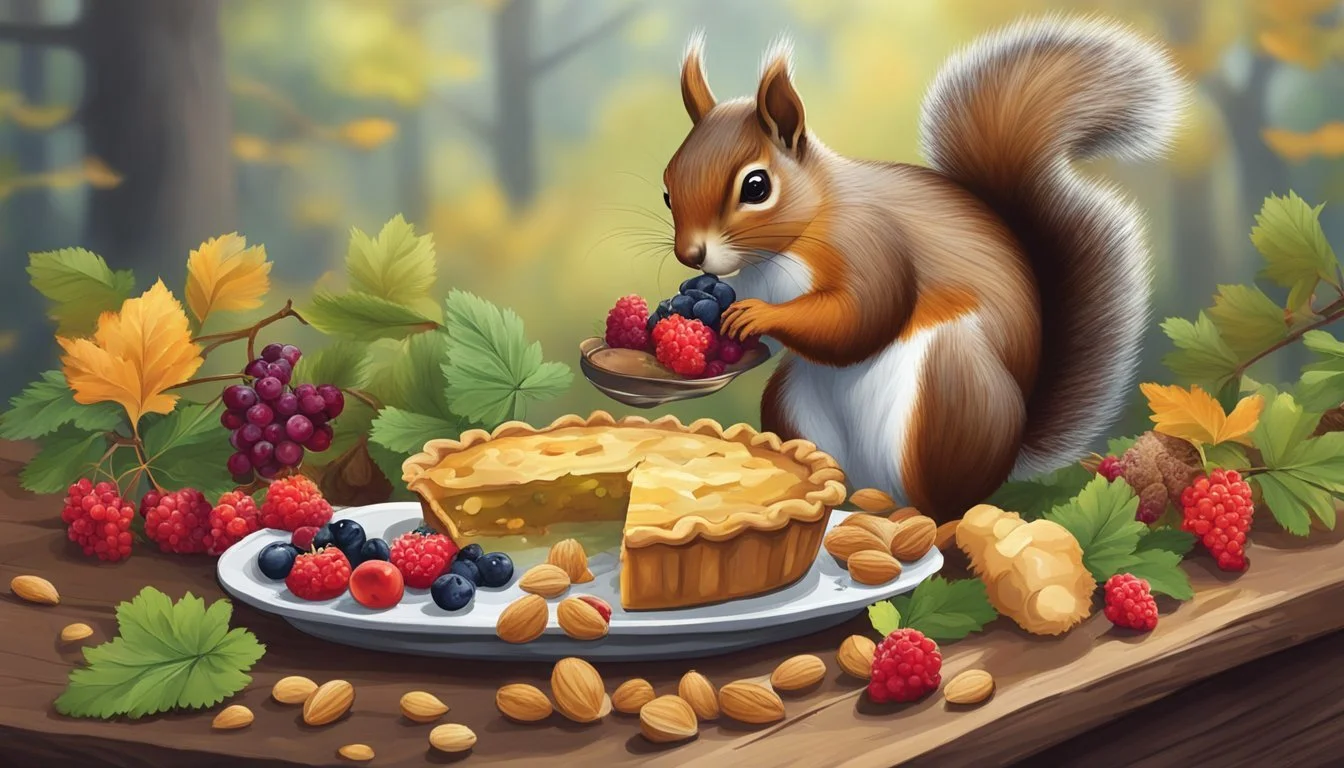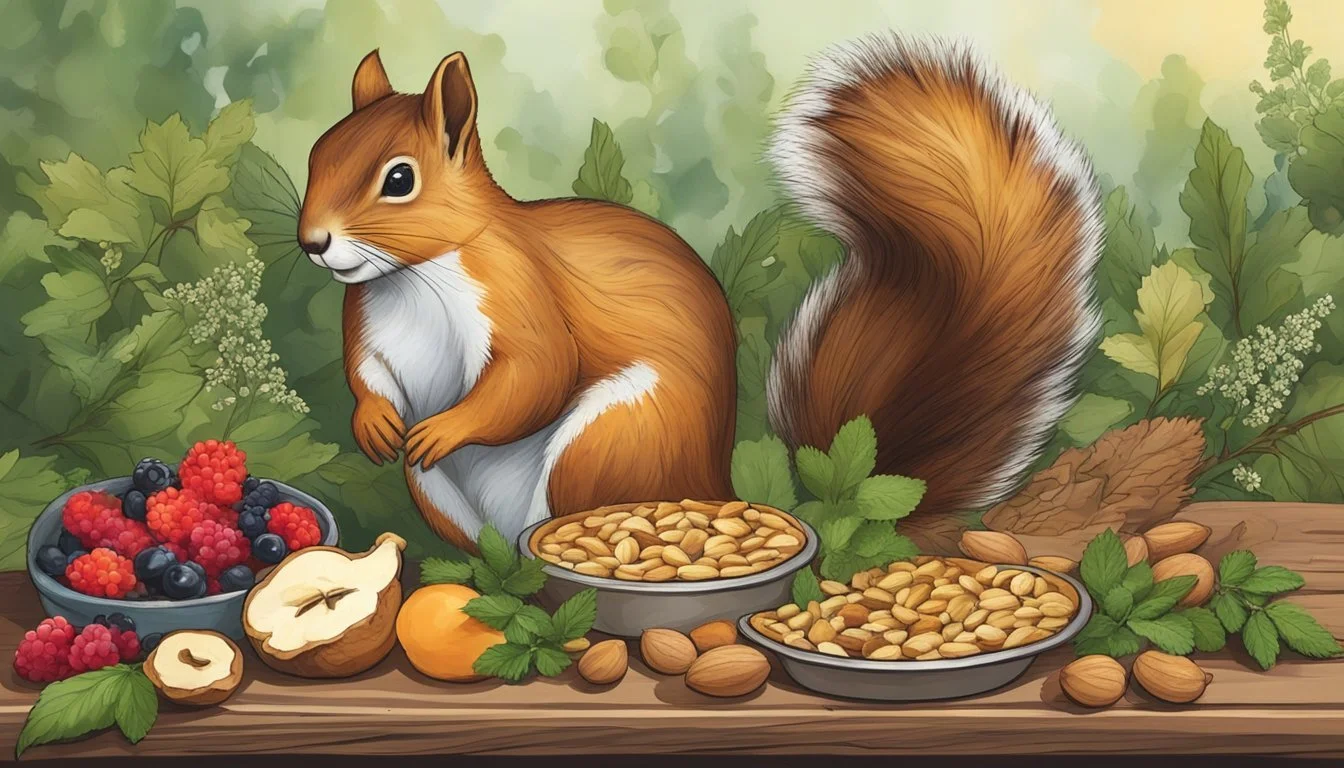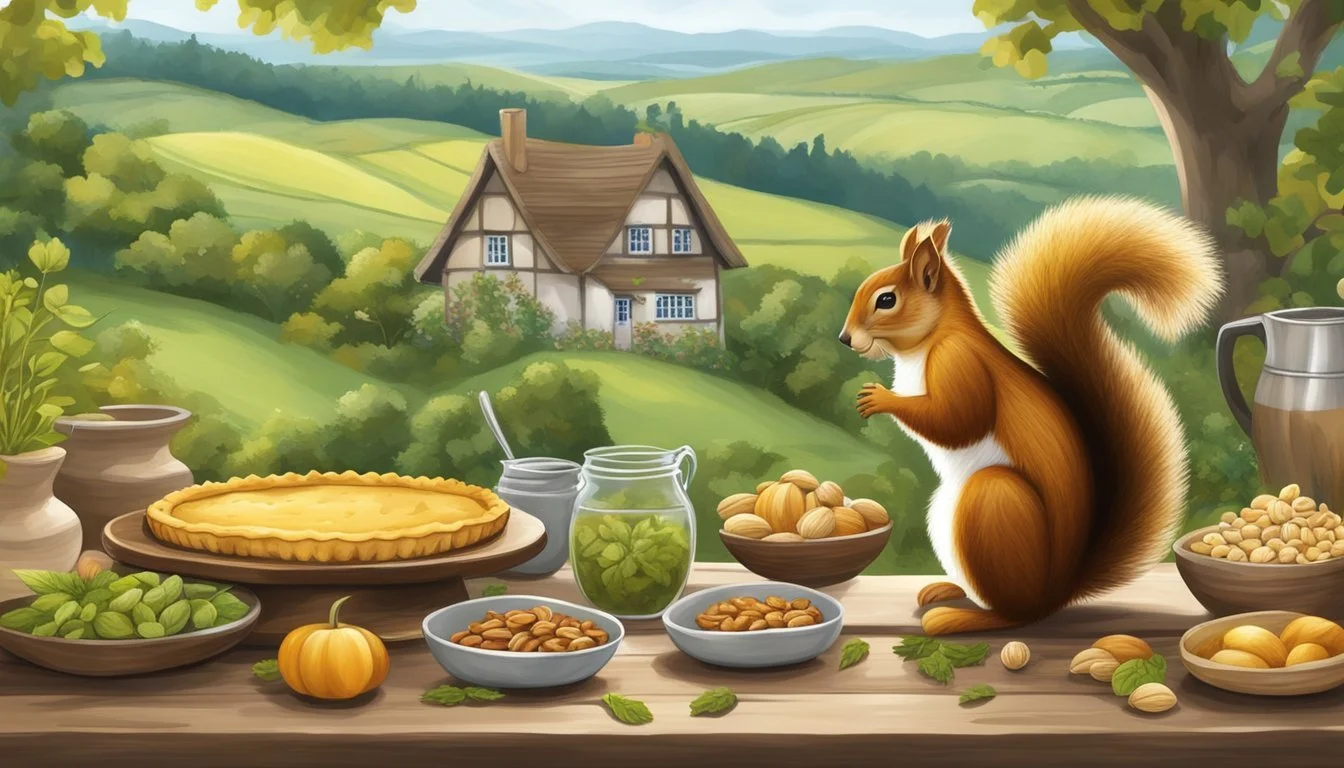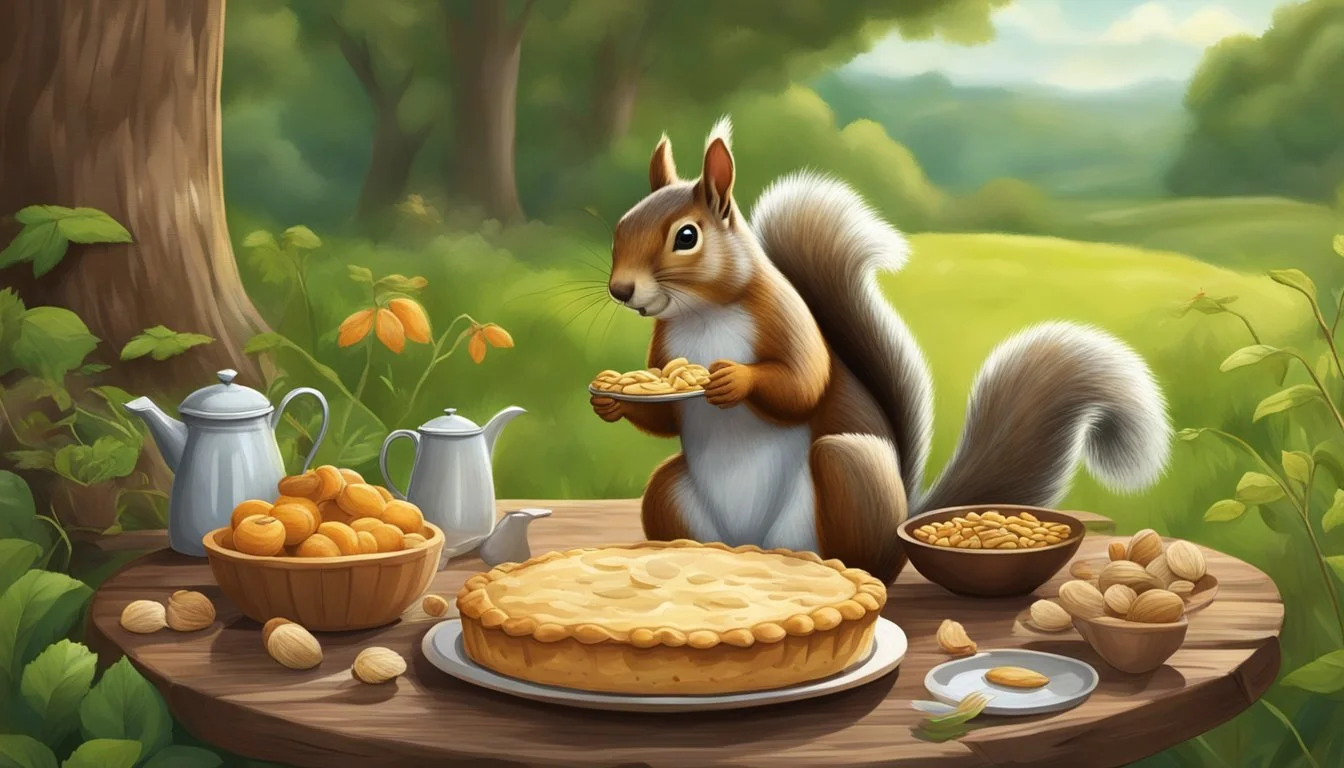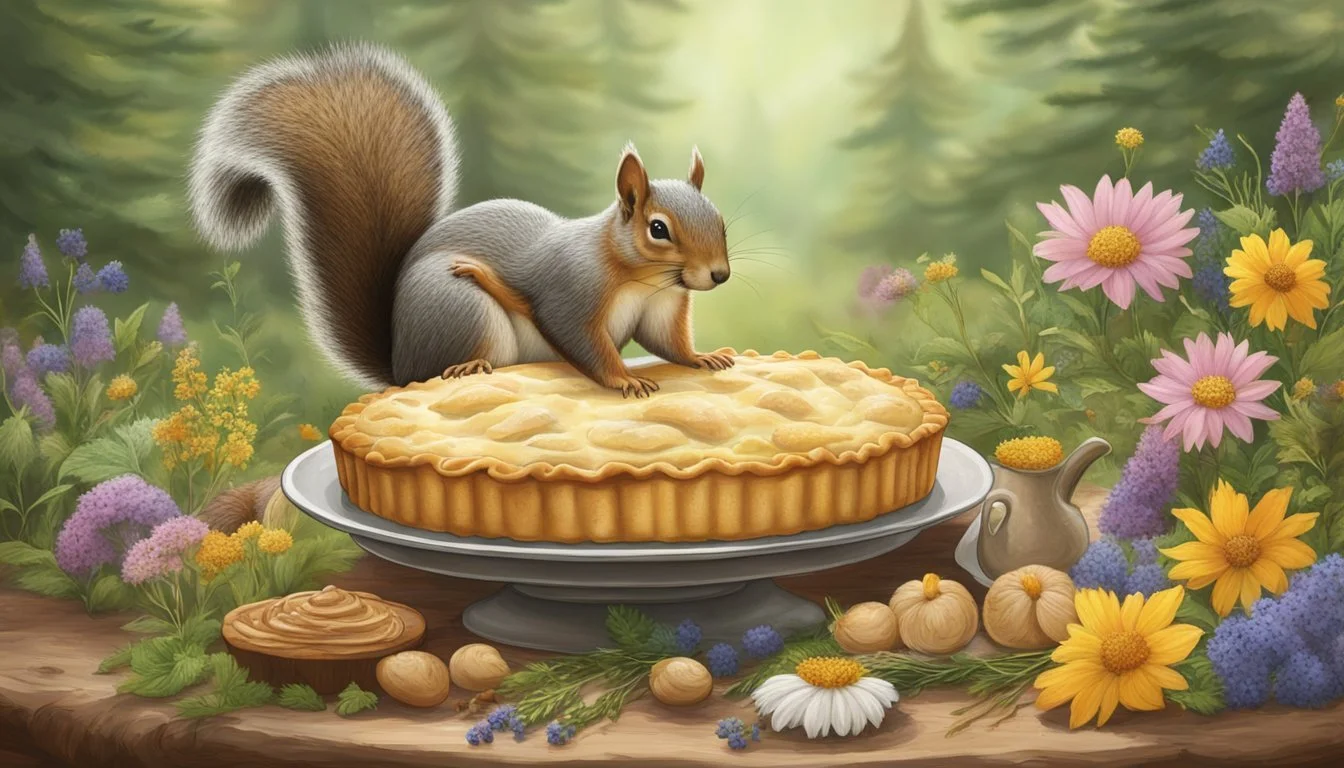Squirrel Pie
A Traditional British Countryside Delicacy Unveiled
Squirrel Pie, a dish steeped in British countryside tradition, emerges from history as a testament to rustic cooking and resourcefulness. This hearty meal, once a staple for rural inhabitants, encapsulates the essence of British cuisine known for its robust and comforting flavors. The pie combines the gamey and surprisingly nutty taste of squirrel meat, which is a testament to the squirrels' natural diet, with a medley of locally sourced vegetables and aromatic herbs, all encased in a buttery pastry.
In the verdant expanses of the British outdoors, where squirrels abound, the practice of including game into one’s diet harks back to a time of simplicity and living off the land. It's within this context that Squirrel Pie adopts its reputation — not simply a novelty, but rather a culinary nod to self-sufficiency and a sustainable ethos. The meat, often slow-cooked until tender, pairs with ingredients like onions, cabbage, and root vegetables, coming together to create a pie that’s both nutty and satisfying.
Though not as common on modern menus, Squirrel Pie retains an affectionate place in the realm of British gastronomy. It continues to be a dish that sparks curiosity and respect for tradition amongst culinary enthusiasts. Presented to perfection, this pie is a rustic and satisfying dish that connects diners with the country's pastoral past while providing a unique and flavor-packed eating experience.
Historical Context
The culinary traditions of Britain boast an extensive history where pies have evolved from simple, hearty fare to diverse, savory dishes. This section explores the background of traditional British pies with an emphasis on the lesser-known, yet historically significant, squirrel pie.
Origins of Squirrel Pie
Squirrel meat has been consumed in Britain since ancient times, particularly in rural areas where these animals were plentiful and hunting them provided a source of protein. Squirrel pie, a dish tied to the British countryside, reflects the pragmatism and inventiveness of country cooking, wherein available wild game was often baked into pies.
Availability: Rural populations utilized local wildlife including squirrels.
Preparation: Traditionally combined with vegetables and seasonings in a pastry crust.
Evolution of British Pies
British pies have a rich history with savory pies being a cornerstone of British cuisine. Over centuries, these pies have diversified in content and form. Signature pies include the Cottage Pie and Shepherd's Pie, each having distinct characteristics.
Cottage Pie: Utilizes ground beef, originating from the need to use leftover roasts.
Shepherd's Pie: A variation that traditionally features ground lamb or mutton topped with mashed potatoes; the term was first documented in Scotland in 1849.
Types of Savory Pies:
Cottage Pie
Shepherd's Pie
Squirrel Pie
Key Evolutionary Highlights:
1850s: Rise in popularity of meat-based pies alongside industrialization.
Variations: Diversified recipes to include different types of meats and seasonings.
Cultural Impact: Both Cottage and Shepherd's Pies embody the resourcefulness of using readily available ingredients.
These pies underscore the British knack for creating hearty and satisfying meals that have stood the test of time, with squirrel pie being a unique but telling example of the nation's culinary ingenuity.
Recipe Essentials
Preparing a classic Squirrel Pie involves selecting the right blend of ingredients and mastering specific preparation and cooking techniques. This section will provide the essential components and methods to create this hearty dish, staying true to its British countryside roots.
Key Ingredients
Meat: Squirrel meat is the star of this pie, known for its gamey flavor. If unavailable, rabbit can be used as a substitute.
Veggies: Typical vegetables include sliced onions, diced carrots, and peas, adding sweetness and texture to the filling.
Herbs: Fresh rosemary and parsley enhance the gamey taste of the meat.
Fat: Bacon fat or butter is used for sautéing vegetables, adding richness to the dish.
Stock: Beef stock provides a robust base for the gravy, which coats the meat and vegetables.
Seasoning: Salt, black pepper, and optionally, Worcestershire sauce, tailor the dish's savoriness.
Thickener: For the pie filling's consistency, options include cornflour or a roux made with flour and butter.
Crust: A traditional pie crust requires flour, butter, and a bit of salt. Egg wash - beaten egg with water - ensures a golden brown finish.
Preparation Techniques
Chopping: Vegetables should be finely chopped for even cooking and a well-balanced bite.
Sautéing: Onions and garlic are sautéed in fat until fragrant, which forms the flavor foundation.
Browning: Meat pieces are browned for a caramelized surface, enhancing the overall flavor profile.
Cooking Methods
Simmering: The meat and vegetables are cooked in stock at a low heat, allowing flavors to merge and deepen.
Baking: After assembling the pie with its rich filling, it is baked until the crust is golden and flaky.
Nutritional Information
In discussing the nutritional information of squirrel pie, it is important to highlight the balance of the diet and the quality of the meat chosen. Squirrel pie, when prepared in traditional fashion, can be both a hearty and nutrient-rich dish suitable for those seeking alternative meat options with unique nutritional benefits.
Balancing The Diet
Squirrel meat is a good source of protein, providing a comforting and satisfying meal. It contains considerably less calories and saturated fat than some conventional red meats, making it a leaner option. Being wild game, it often contains higher levels of certain nutrients compared to farm-raised meat, including iron, which is essential for healthy blood cells, and potassium, which is crucial for muscle function and heart health.
In terms of dietary fiber, squirrel pie's nutritional content is often boosted by the accompanying vegetables used in the filling, such as cabbage and onions. These ingredients not only add texture and flavor but also contribute essential fiber, vitamins, and minerals to the dish. The vegetables boost Vitamin A and Vitamin C levels, as well as providing calcium.
Understanding Meat Choices
When selecting meats for pies, one should consider the implications of cholesterol and sodium content. Squirrel meat can be comparable to chicken in terms of cholesterol, which should be consumed in moderation within a balanced diet. Preparing the pie with less added salt can help manage sodium intake.
Squirrel pie, while not a common dish commercially, may appeal for its more unique nutrition facts. Its rich content in carbohydrates comes from the pie crust and root vegetables, which offer energy, while the squirrel meat itself is a source of various micronutrients. The fiber content, largely from the vegetables, and the vitamin and mineral content of the meat, strengthen the meal's nutritional profile.
It’s worth noticing that the nutritional value can vary significantly depending on the preparation and specific ingredients used in the pie, but, in general, the dish offers a diverse array of nutrients.
Culinary Techniques
When making a traditional British squirrel pie, the culinary techniques used are crucial in achieving the desired savory flavors and textures. Mastery over baking the pie to perfection and working with pastry is essential.
Baking The Perfect Pie
To bake a squirrel pie to perfection, one must closely monitor the cooking process. The pie is typically baked until the topping is a golden brown hue. An ideal baking temperature is around 400°F (200°C), which allows for a thorough cooking of the meat and a crisp crust. The pie must be checked regularly to prevent over-baking, which can lead to a dry filling or a burnt crust.
Preheat oven to a high temperature before placing the pie to ensure even baking.
Bake until the crust is golden brown, indicating a crisp texture.
Working with Pastry
The choice of puff pastry or a simple shortcrust, which involves all-purpose flour, fat, and water, impacts the end result. The pastry must be rolled out to an even thickness and carefully placed over the pie to prevent tears that could cause the filling to leak.
Keep the pastry cold prior to use, as this helps maintain its structure and prevents shrinkage.
Seal the edges of the pastry to the pie dish to avoid gaps where steam can escape.
Accompaniments and Variations
When one thinks of squirrel pie, a concoction of rich meat encased in pastry comes to mind. The dish elevates when paired with complimentary sides, and can vary significantly depending on regional influences and local ethos.
Side Dishes
Mashed Potatoes: A creamy heap of mashed potatoes, potentially sweet potatoes for a sweeter contrast, makes for a classic side that balances the gamey taste of squirrel meat.
Jersey Royal Potatoes can serve as an alternative, prized for their unique taste during the peak season in May.
Vegetables: Crisp vegetables like broccoli or cabbage often accompany the pie, either incorporated into the gravy or served on the side.
Broccoli provides a crunchy, fresh counterpoint to the meaty filling.
Cabbage, sometimes sautéed with onions, enriches the dish with its savory flavor profile.
Roasted Potatoes: A staple in British cuisine, roasted potatoes offer a crispy, hearty option that adheres to the comfort theme of this rural dish.
Regional Variations
Lamb: In regions where squirrel meat might be less accessible, lamb serves as a robust alternative, bringing a traditional British savor to the table.
Fish Pie: Coastal areas might adapt the pie using local seafood, creating a 'fish pie' that mirrors the hearty essence of its land-based counterpart.
Cornish Pasty: Cornish regions might lean towards including squirrel meat in their iconic pasties, blending the novelty of squirrel with the heritage of the pasty.
Cheese and Onion Pie: For a vegetarian twist, some variations replace meat with cheese and onions, offering a savory pie that stands on its own.
Ham: Another common variant includes ham, which can be used alongside or in place of squirrel, tailored to the diner's preference or local ingredient availability.
Serving and Presentation
Squirrel pie, a long-standing British countryside dish, is a testament to rustic charm and heartiness. It is traditionally served as comfort food during colder months, combining rich meat flavors with earthy root vegetables.
Plating Suggestions
For an optimal presentation, one should serve the squirrel pie hot, with its top crust golden brown and flaky. If one is serving a pot pie version, a deep dish can showcase the thick, hearty filling, layered with tender squirrel meat, and a mix of root vegetables like parsnip. Alternatively, hand pies offer a more personalized serving option, with each pie featuring a beautifully crimped edge. One can garnish the plate with a sprig of parsley to add a touch of color.
Root Vegetables: Consider fan-slicing parsnip or layering thinly cut potatoes atop the pie before baking for a decorative and tasty finish.
Meat Presentation: Shred the squirrel meat for a more refined texture, ensuring it melds seamlessly with the prospective elements of shredded or Savoy cabbage.
Seasonal Considerations
Squirrel pie fills the role of a warming winter dish. Hence, the use of seasonal vegetables such as Savoy cabbage or parsnip is fitting—they add a subtle sweetness and are often at their best during the colder months. In spring, one might lighten the dish with the addition of new potatoes or fresh greens alongside the pie. When preparing the filling, one should simmer the pie contents slowly, allowing the flavors of the meat and veg to deepen and meld, reflecting the season's bounty.
Winter: Emphasize dense, rich fillings with shredded cabbage and root vegetables to impart a comforting, belly-warming quality.
Spring: Incorporate lighter accompaniments such as fresh peas or tender carrot slices to balance the heartiness of the squirrel meat.
Preservation and Leftovers
In the aftermath of preparing a hearty Squirrel Pie, proper storage techniques and creative use of leftovers ensure minimal waste and continuous enjoyment of this rustic dish.
Storing Squirrel Pie
Once the Squirrel Pie is cooked, it can be stored in the refrigerator for up to three days. The pie should be covered in plastic wrap or aluminum foil to retain moisture and flavor. For longer preservation, the pie may be frozen. To freeze, one should wrap the pie tightly in plastic and then aluminum foil, or use an airtight container suitable for freezer storage.
Cover with plastic wrap or aluminum foil
Consume within three days
Freezer:
Wrap with plastic, then aluminum foil
Use an airtight container
Can be stored for up to two months
Reinventing Leftovers
Leftover Squirrel Pie filling offers the opportunity to experiment with new dishes. The filling can be repurposed as a main course when paired with different accompaniments such as leeks or incorporated into a slow cooker preparation to enhance flavor and tenderness. Alternatively, frying leftover pieces can add a pleasant texture and revitalize the flavor profile.
Slow Cooker Ideas:
Combine filling with sliced leeks and cook on low for a new stew
Frying Leftovers:
Create a filling for savory turnovers by frying until crispy
In each scenario, the pie's leftovers are transformed, ensuring a satisfying culinary experience with each meal.
Dining Etiquette
Understanding British dining traditions and the specific etiquette around dishes like Squirrel Pie enriches the dining experience and shows respect for cultural practices.
British Dining Traditions
In the context of British cuisine, there is a deep appreciation for the ritual of mealtime. Where dishes such as Cottage Pie, Shepherd’s Pie, Pork Pie, and Steak Pie hold a place of comfort, their consumption often follows tradition. British dining customs entail polite table manners, with diners expected to use cutlery properly – fork in the left hand and knife in the right. Meals are typically enjoyed at a leisurely pace, giving time to savor the food and engage in conversation.
Use of traditional tableware is commonplace.
Communal dishes share the table for everyone's convenience.
Squirrel Pie Etiquette
The serving and enjoyment of Squirrel Pie, a more unique facet of rural British cuisine, adhere to these general etiquettes but have their own specifics. As a hearty, prepared dish, it should be served hot and traditionally in a communal style. Individual portions are often spooned out, ensuring that each person receives a fair share of the crust and filling.
Cutlery: A pie server is used for the first cut, after which a knife and fork are appropriate.
Portioning: Serve in a manner that maintains the pie's structure, without crumbling the pastry.
Table manners require diners to wait until everyone is served before beginning to eat, and compliments to the chef or host are esteemed. While British dining is rooted in tradition, the atmosphere is typically one of enjoyment and community, with dishes like Squirrel Pie embodying the heartiness of British country fare.

